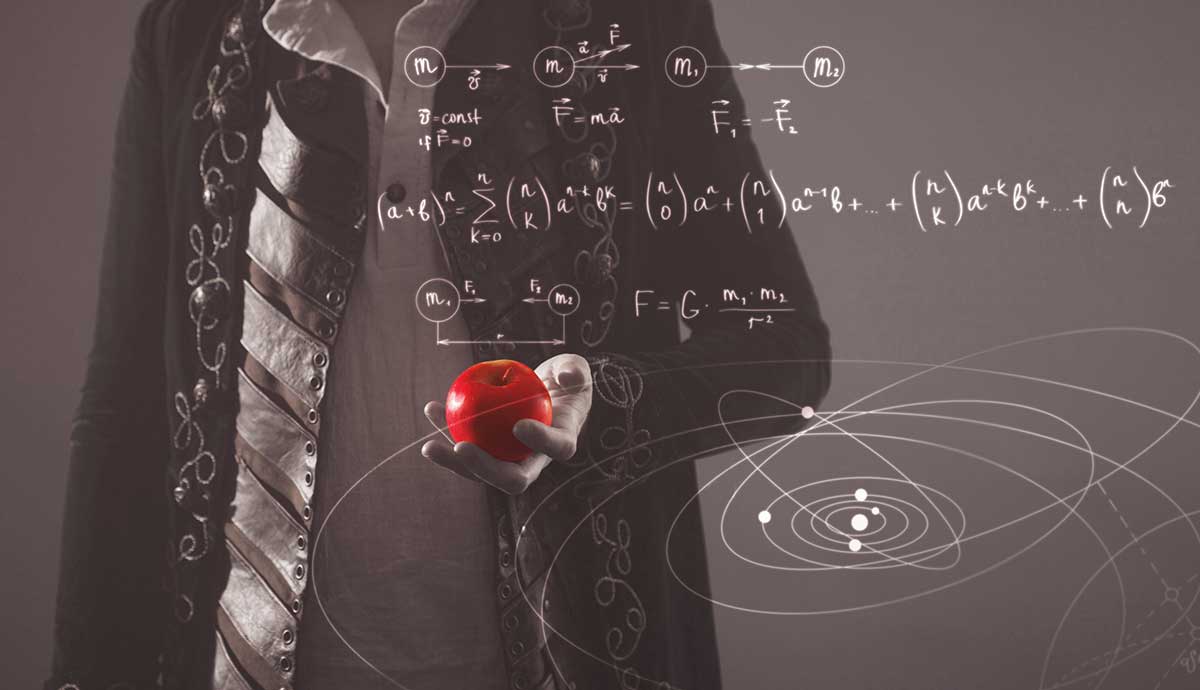
One of the most celebrated scientists in history, the Renaissance man Isaac Newton made a significant contribution in the fields of physics, math and optics. He is probably best-known for developing the theory of gravity, but his work extends far further, including the principles of light and the reflecting telescope, the laws of motion and a new branch of mathematical study which came to be known as calculus. His genius is so unparalleled that Albert Einstein cited Newton as one of his ultimate heroes, calling him the smartest person that ever lived, while New Scientist referred to him as “the supreme genius and most enigmatic character in the history of science.” Below, we outline Isaac Newton’s most important scientific and mathematical breakthroughs which forever altered the way we think about and study the world.
Isaac Newton Discovered the Laws of Gravity

Newton’s greatest and most influential work was his theory of universal gravitation. He argued that every particle in the universe is attracted to each other through the force of gravity. While it sounds simple, the ramifications of this study allowed a greater understanding of the entire universe. His theories on gravity particularly applied to the movement of the planets and the sun in relation to one another, and paved the way for space travel in the following centuries. Newton wrote his theory on universal gravitation in 1666 at the age of 23, and published it in the wider study the Philosophiae Naturalis Principia Mathematica (or Mathematical Principles of Natural Philosophy) in 1687. Legend has it his study on gravity was sparked by watching an apple fall from a tree, observing how it fell immediately downwards, to the ground.
Isaac Newton Studied the Laws of Motion

In the very same Principia, Newton also published his three laws of motion: Inertia, Acceleration, and Action and Reaction. In his studies he argued that any object set into motion will keep moving until acted upon by an external force. This force equals mass x acceleration, and when every action happens, there is also an equal and opposite reaction. To back up his studies he produced a series of mathematical equations and formulas which explained the core, integral aspects of the world around us and how objects relate to one another. These ideas laid the groundwork for Albert Einstein’s theory of relativity.
He Worked Out the Principles of Visible Light

Newton was also an expert in the field of optics, and made a series of important discoveries in relation to light. He invented the first reflecting telescope in 1668, which used mirrors instead of glass, allowing for a crisper image, and published a series of notes on optics in 1671. After studying refraction, he realized that white light is a composite of all the rainbow colors, and argued that light was made up of particles, not waves, as had been previously thought. He was the first to break apart white light using a prism to reveal its rainbow hues, and to bring it back again into white light, thus proving to his harshest critics that he was, in fact, correct. Such similar reflecting telescopes are still in use today, such as the Hubble Space Telescope.
He Also Made a Significant Contribution to the Field of Calculus

Among his many other achievements are the discovery of calculus, a system of mathematics that allows us to study change, by calculating and comparing movement in objects. In particular, he developed the concept of ‘fluxions’ (differentials) which explained the phenomenon of celestial orbits, which he developed simultaneously, yet entirely separately, from the German mathematician, philosopher and scientist Gottfried Wilhelm Leibniz.










